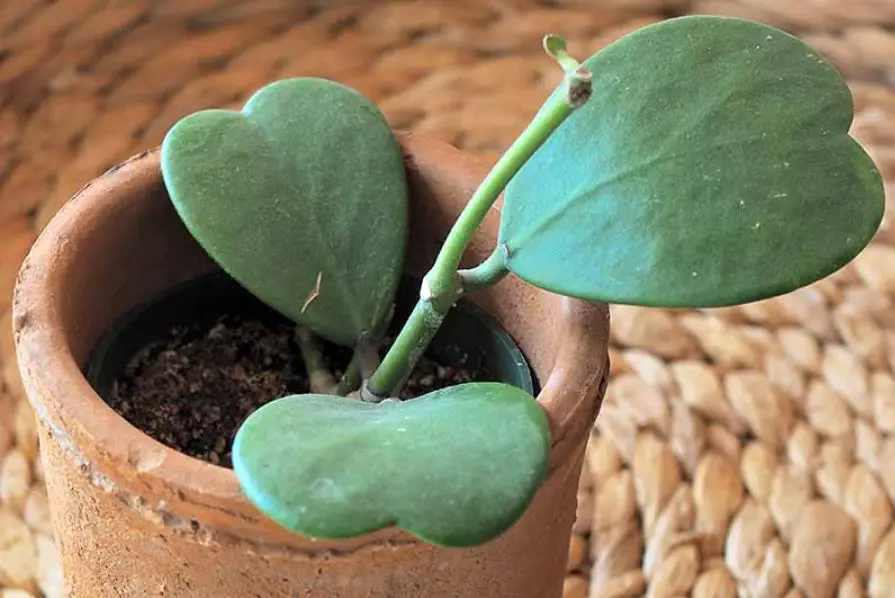The Valentine plant, known as the lover wax plant or the sweetheart hoya plant, gets its name from its thick, succulent, heart-shaped leaves. The darling hoya plant is a beautiful, low-maintenance indoor plant, like other Hoya types. Find out more about wax plants by reading on.

Hoya Wax Plant Info
Sweetheart Hoya (Hoya kerrii), a plant native to Southeast Asia, is a peculiar Valentine’s Day gift that typically has one 5-inch (12.5 cm) leaf placed erect in a tiny pot. The plant enjoys a hanging basket despite its somewhat sluggish growth, where it ultimately grows into a bushy mass of green hearts. Mature plants may grow up to 13 feet long (4 m.).
Clusters of white flowers with crimson centers appear in the summer and stand out sharply against the variegated or deep green foliage. As many as 25 flowers might be seen on a mature plant.
Growing Sweetheart Wax Plants
While sweetheart hoya maintenance is simple, the plant has specific preferences for its growth environment.
This Valentine’s hoya can handle a little shade but not complete darkness. However, the plant does better and has a higher chance of blooming in direct or strong sunshine. Maintaining a room’s temperature between 15 and 26 C or 60 to 80 F is recommended.
Sweetheart hoya is comparatively drought-tolerant and may survive with as few as one or two monthly waterings because of its plump, succulent leaves. When the soil feels barely dry to the touch, water deeply and let the container completely drain.
Wet, sluggish soil may lead to lethal rot even though it should never become bone dry. Be careful you place the lover hoya in a container with a drainage hole.
Sweetheart, hoya just needs a little fertilizer and is a light feeder. Combining ¼ teaspoon (1 milliliter) of a water-soluble, balanced houseplant fertilizer in a gallon (4 L) of water is sufficient. Feed the plant once monthly throughout the growing season, and stop feeding it in the winter.
Try exposing a mature plant to stronger light or colder nighttime temps if it does not blossom.

